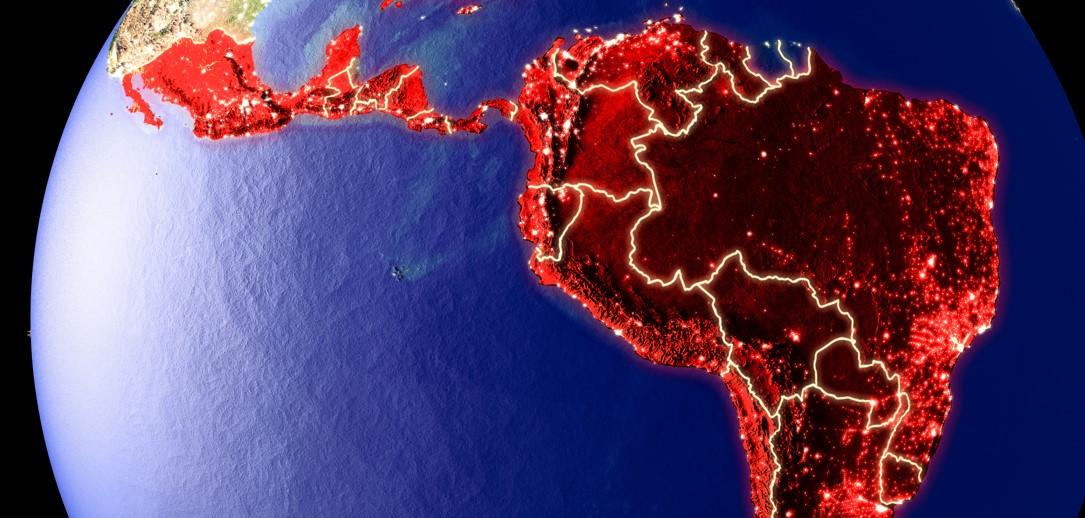The latest estimates from consensus for the main Latin American economies show a continent facing a lost decade. The region GDP growth has been downgraded yet again to a modest 1.1% for 2023, with rising inflation and weakening gross fixed investment. Considering that the region was already recovering at a slower pace than other emerging markets, the outlook is exceedingly worrying.
The poor growth and high inflation expectations are even worse when we consider that consensus estimates still consider a tailwind coming from rising commodity prices and more exports due to the China re-opening.
How can a region with such high potential as Latin America be condemned to stagflation? The answer is simple. The rise of populist governments in Colombia, Chile and Brazil have increased the concerns about investor security, property rights and monetary discipline.
Argentina is expected to post a modest 0.2% GDP growth in 2023 with 95% inflation and a debt to GDP of 72%. Years of monetary and fiscal excess have destroyed the purchasing power of the local currency and dilapidated the prospect of real growth. In Argentina, poverty has escalated to 36.5% of the population and the government policies double down on interventionism, price controls and higher taxes with the expected negative result. Despite the tailwind of high demand for soja and cereals globally, Argentina dives deeper into Venezuela territory, where consensus expects another year of weak 3% bounce after destroying 80% of the output in a decade, with enormous inflation, 132%.
The problem? The new governments in Chile and Colombia are announcing policies that resemble those of the “Peronist left” in Argentina and the Fernandez government in Argentina is looking more like Maduro’s Venezuela each day.
Chile is expected to post no growth in 2023 despite an estimated higher copper price, and 15% inflation. Colombia, which showed the strongest recovery from the covid-19 crisis until 2022, in which consensus expects a 7% growth, is feared to stop on its tracks and deliver a poor 1.6% GDP growth with elevated inflation, close to 7%.
In Brazil, consensus expects a poor 0.9% growth with 5% inflation. It does not look as bad as Argentina, but the first major announcement of newly elected president Lula has already triggered all alarm bells. Lula stated that he wanted to change the constitution to lift the spending limit and increase government spending even more. The Brazil currency and 10-year bond reacted aggressively to this risk because everyone can remember that Lula’s “economic miracle” a decade ago came from massively high oil prices and, when the commodity bonanza ended, his successor Rousseff sent the country to a deep crisis where spending soared and growth stagnated.
You may say that the rise of populism in Latin America is the consequence of the failed classic liberal policies implemented before, but that would be a grave mistake. Most of these countries have not seen open and liberal economies but crony states. Statism failed and more statism fails even faster.
Global investors see the enormous potential of Latin America. However, when governments start to impose interventionist policies, put at risk property rights with expropriation threats and at the same time massively increase monetary imbalances printing currencies with no real global and diminishing local demand, the combination is destructive.
Why do citizens vote for politicians that implement confiscatory and extractive policies? In many economic debates in Latin American media one can hear the word “redistribution” repeated incessantly. Many believe that wealth is like a pied that can be cut and distributed at will, but ignore that wealth is either created or destroyed, it does not stay flat.
Interventionist policies destroy wealth in three ways: First, attacking independent institutions and introducing political random decisions in legal and investor security which erodes growth potential, investment, and employment. Second, by increasing taxes on the productive sector to pay for massive subsidies paid in a constantly depreciated currency, which creates a double negative of lower growth, weaker local businesses and a dependent subclass that rarely emerges. The productive sector ends forced to operate in the underground economy to avoid confiscatory taxes. Third, interventionism destroys the purchasing power of the local currency by breaking all the rules of prudent monetary policy and financing an ever-increasing government size printing a constantly devalued currency. The combination of these three factors means poverty and stagnation.
Why do interventionist governments do this when they know -and they do- it does not work?
Monetary destruction is the easiest and most effective way of nationalization of an economy. Printing currency is a form of expropriation of wealth, as money creation is never neutral, it benefits the government and hurts real wages and savers.
Why would “populist” governments impose policies that perpetuate poverty and hurt the people? Interventionism does not aim to increase prosperity but take full control of a nation. The three mentioned policies are aimed at grasping full control of a country and make the population dependent, not deliver growth and improve social conditions.
Extractive and confiscatory policies are not social measures, they are profoundly anti-social. The worst is that once implemented, it becomes difficult to unwind. We should learn the lesson everywhere because it is coming to your country soon.
























